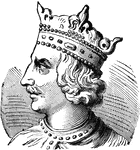
Henry I of England
Henry I (c. 1068/1069 – 1 December 1135) was the fourth son of William I the Conqueror, the first…
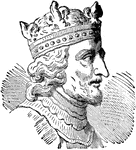
Stephen I of Hungary
Saint Stephen I was Grand Prince of the Magyars (997-1001) and the first King of Hungary (1001-1038).…
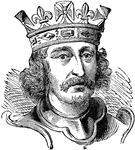
Richard I of England
Richard I (8 September 1157 – 6 April 1199) was King of England from 6 July 1189 until his death.…
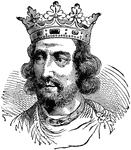
Henry III of England
Henry III (1 October 1207 – 16 November 1272) was the son and successor of John "Lackland" as…

Edward I (Longshanks)
Edward I (17 June 1239 – 7 July 1307), popularly known as Longshanks, achieved historical fame…
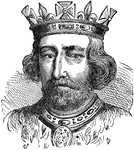
Edward II of England
Edward II, (April 25, 1284 – September 21, 1327) of Caernarfon, was King of England from 1307…
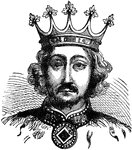
Richard II of England
Richard II (6 January 1367 – ca. 14 February 1400) was King of England from 1377 until he was…

Henry V of England
Henry V (16 September 1386 – 31 August 1422) was one of the most significant English warrior kings…
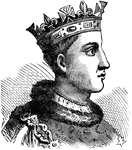
Henry VI of England
Henry was the only child and heir of King Henry V of England and therefore great things were expected…

Richard IV of England
Edward of York was born on April 28, 1442, at Rouen, France (in the Chateau de Rouen), the second son…
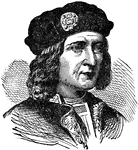
Richard III of England
Richard III (2 October 1452 - 22 August 1485) was King of England from 1483 until his death. He was…
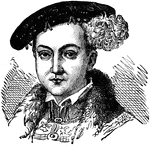
Edward VI of England and Ireland
Edward VI (12 October 1537 - 6 July 1553) became King of England and Ireland on 28 January 1547 and…

Charles II
Charles II (Charles Stuart; 29 May 1630 - 6 February 1685) was the King of England, Scotland, and Ireland.

Richard III of England
Richard III (2 October 1452 – 22 August 1485) was King of England from 1483 until his death. He…
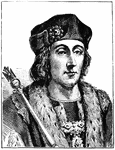
Henry VII of England
Henry VII (January 28, 1457 – April 21, 1509), King of England, Lord of Ireland (August 22, 1485…
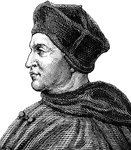
Thomas Cardinal Wolsey
Thomas Cardinal Wolsey (c.1470~1471 – November 28 or November 29, 1530), who was born in Ipswich,…
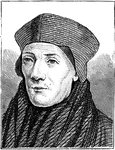
John Cardinal Fisher
John Cardinal Fisher (c.1469 – 22 June 1535), from 1935 Saint John Fisher, was an English Catholic…
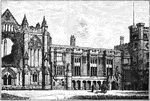
Newstead Abbey
Newstead Abbey, in Nottinghamshire, England, originally an Augustinian priory, is now best known as…

Wimborne Minster
Wimborne Minster, known locally as the Minster, is the parish church of Wimborne, Dorset, England. The…
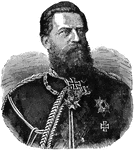
Frederick III, German Emperor
Frederick III (October 18, 1831 - June 15, 1888), was German Emperor and King of Prussia, ruling for…
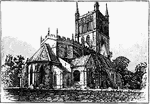
Pershore Abbey
Between AD 681 and 689, King æthelred of Mercia gave estates at Pershore to the Bishop of Worcester…

Royal Palace, Madrid
The Royal Palace of Madrid is the official residence of the King of Spain, located in Madrid. King Juan…
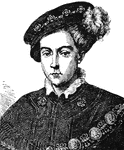
Edward VI of England
Edward VI (12 October 1537 – 6 July 1553) became King of England and Ireland on 28 January 1547…
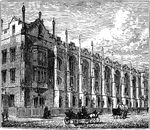
Edward VI's School at Birmingham
King Edward's School is an independent secondary school in Birmingham, England, founded by King Edward…

Archbishop Thomas Cranmer
Thomas Cranmer (2 July 1489 – 21 March 1556) was a leader of the English Reformation and Archbishop…
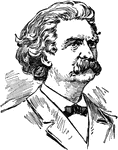
Samuel Langhorne Clemens
American writer who wrote classics such as The Adventures of Huckleberry Finn, The Adventures of Tom…
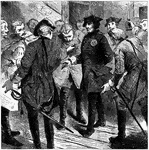
Frederick II of Prussia
An illustration of Frederick II of Prussia attempting to find lodging for the evening. Frederick II…
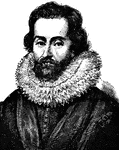
James the First
He ruled in Scotland as James VI from 24 July 1567, when he was only one year old, succeeding his mother…
Hampton Court, 17th Century
Hampton Court Palace is a former royal palace in the London Borough of Richmond upon Thames, south west…
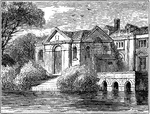
Gunpowder Conspirators' House, Lambeth
The Gunpowder Plot of 1605, or the Powder Treason, as it was known at the time, was a failed assassination…
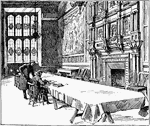
The Jerusalem Chamber
According to Holinshed, it was predicted that Henry IV would die in Jerusalem; Shakespeare's play repeats…

Bishop Lancelot Andrewes
Lancelot Andrewes (1555 – 25 September 1626) was an English clergyman and scholar, who held high positions…
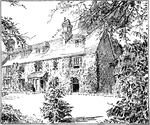
George Herbert's Rector House, Bemerton
George Herbert (April 3, 1593 – March 1, 1633) was a Welsh poet, orator and a priest. He went…

Fairfax Taking Possession of Cochester
In 1189, Colchester was granted its first Royal Charter by King Richard I (Richard the Lionheart.) In…
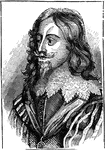
Charles I of England
Charles I, (19 November 1600 – 30 January 1649) was King of England, Scotland and Ireland from…
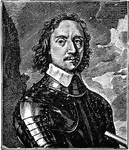
Oliver Cromwell
Oliver Cromwell (25 April 1599 Old Style– 3 September 1658 Old Style) was an English military…
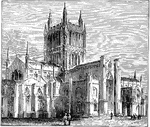
Hereford Cathedral
In the war between King and Parliament (the English Civil War) the city of Hereford fell into the hands…

Charles II of England
Charles II (Charles Stuart; 29 May 1630 – 6 February 1685) was the King of England, Scotland,…
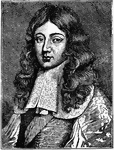
James, Duke of Monmouth
James Crofts, later James Scott, 1st Duke of Monmouth and 1st Duke of Buccleuch (April 9, 1649 –…
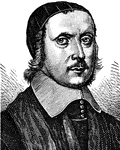
Bishop Jeremy Taylor
Jeremy Taylor (1613 – 13 August 1667) was a clergyman in the Church of England who achieved fame…
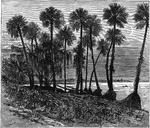
Scene of the Murder of the Huguenots by Menendez
Scene where Pedro Menendez de Aviles, an explorer and founder of St. Augustine, murdered the Huguenots…
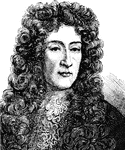
James II of England
James II of England and Ireland, James VII of Scotland (14 October 1633 – 16 September 1701) was…
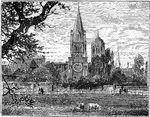
Oxford Cathedral
In 1522, the priory was surrendered to Cardinal Wolsey, having selected it as a site for his proposed…

Archbishop William Sancroft
William Sancroft (30 January 1617 – 24 November 1693), was the 79th archbishop of Canterbury. He became…
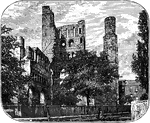
Ruins of Kelso Abbey
Kelso Abbey is a Scottish abbey built in the 12th century by a community of Tironensian monks who had…

King George I of Great Britain
George I (28 May 1660 – 11 June 1727) was King of Great Britain and Ireland from 1 August 1714…
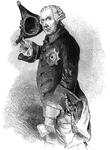
Frederick II of Prussia
A portrait of Frederick II of Prussia in his military uniform. Frederick II (January 24, 1712 –…
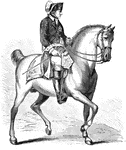
Frederick II of Prussia on Horseback
An illustration of Frederick II of Prussia on horseback. Frederick II (January 24, 1712 – August 17,…
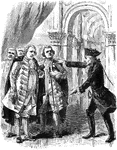
Frederick II of Prussia and Judges
An illustration of Frederick II of Prussia and the unjust judges. Frederick II (January 24, 1712 –…

Usual Appearance of George III. About 1776 (From a sketch by Gear.)
George III (George William Frederick; 4 June 1738 - 29 January 1820) was King of Great Britain and King…

George IV
George IV (George Augustus Frederick; 12 August 1762 - 26 June 1830) was king of the United Kingdom…
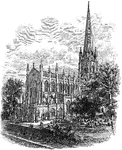
Trinity Church
Trinity Church, at 79 Broadway in New York City, is a historic full service parish church in the Episcopal…

Partown Prawn
Parktown prawn is the familiar term South Africans use for Libanasidus vittatus, a monotypic king cricket…

Harlech Castle
Harlech Castle, located in Harlech, Gwynedd, Wales, is a concentric castle, constructed atop a cliff…
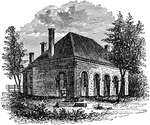
Hanover Courthouse
Hanover County Courthouse is the place where Patrick Henry practiced law and argued the case accusing…
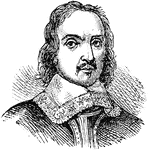
Oliver Cromwell
Oliver Cromwell (25 April 1599 Old Style– 3 September 1658 Old Style) was an English military…
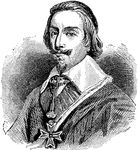
Richelieu
Armand Jean du Plessis de Richelieu, Cardinal-Duc de Richelieu (September 9, 1585 – December 4, 1642),…
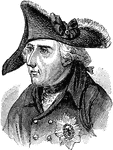
Frederick II of Prussia
Frederick II (January 24, 1712 – August 17, 1786) was a King of Prussia (1740–1786) from…

Peter I of Russia
Peter I the Great or Pyotr Alexeyevich Romanov (June 1672–8 February 1725) ruled Russia and later…

Hamlet
An illustration of a young Hamlet. Hamlet is a tragedy by William Shakespeare, believed to have been…